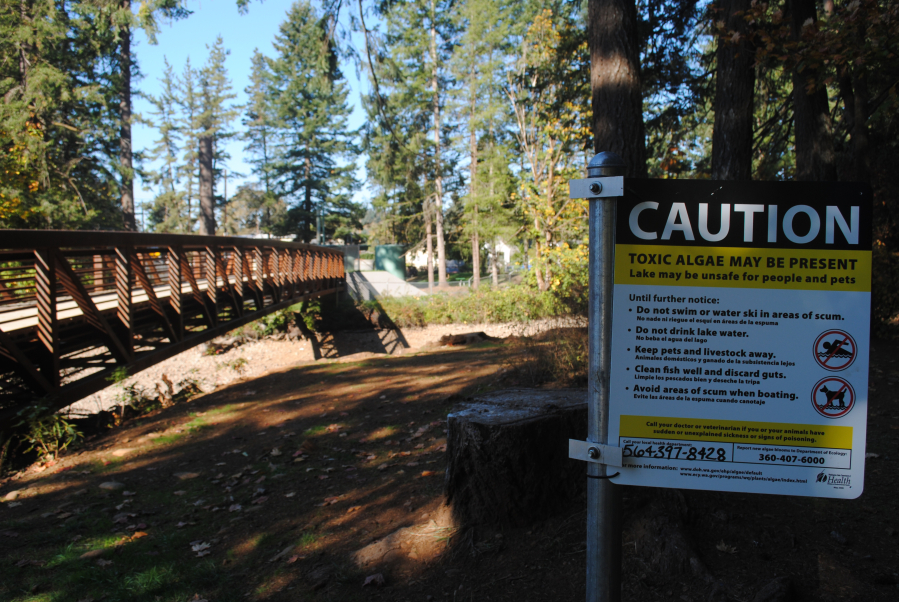UPDATE: As of Oct. 31, the lakes should still be avoided. Clark County has upgraded the concern from an advisory to a warning after test results showed elevated toxin levels last week. Clark County Public Health will be checking the lakes weekly and will notify the public when the algae has dissipated.
Clark County Public Health officials hope to see a lift on the blue-green algae advisory at Camas’ Round and Lacamas lakes by week’s end.
The advisory, still in full effect when this newspaper went to print on Wednesday, Oct. 24, cautions against residents making contact with — or allowing pets to make contact with — water in both lakes. The warning for blue-green algae, or cyanobacteria, was announced at Round Lake Oct. 16, after a citizen reported a visible algae bloom. Advisories at Lacamas Lake followed on Oct. 18.
The county expects to receive test results on the water by the end of the week, though there could be a follow-up test if results don’t indicate that the sample was clean of toxins.
“You can’t just look at a bloom and determine that there are no toxins there, you have to test it,” said Clark County Public Health Director Alan Melnick.




